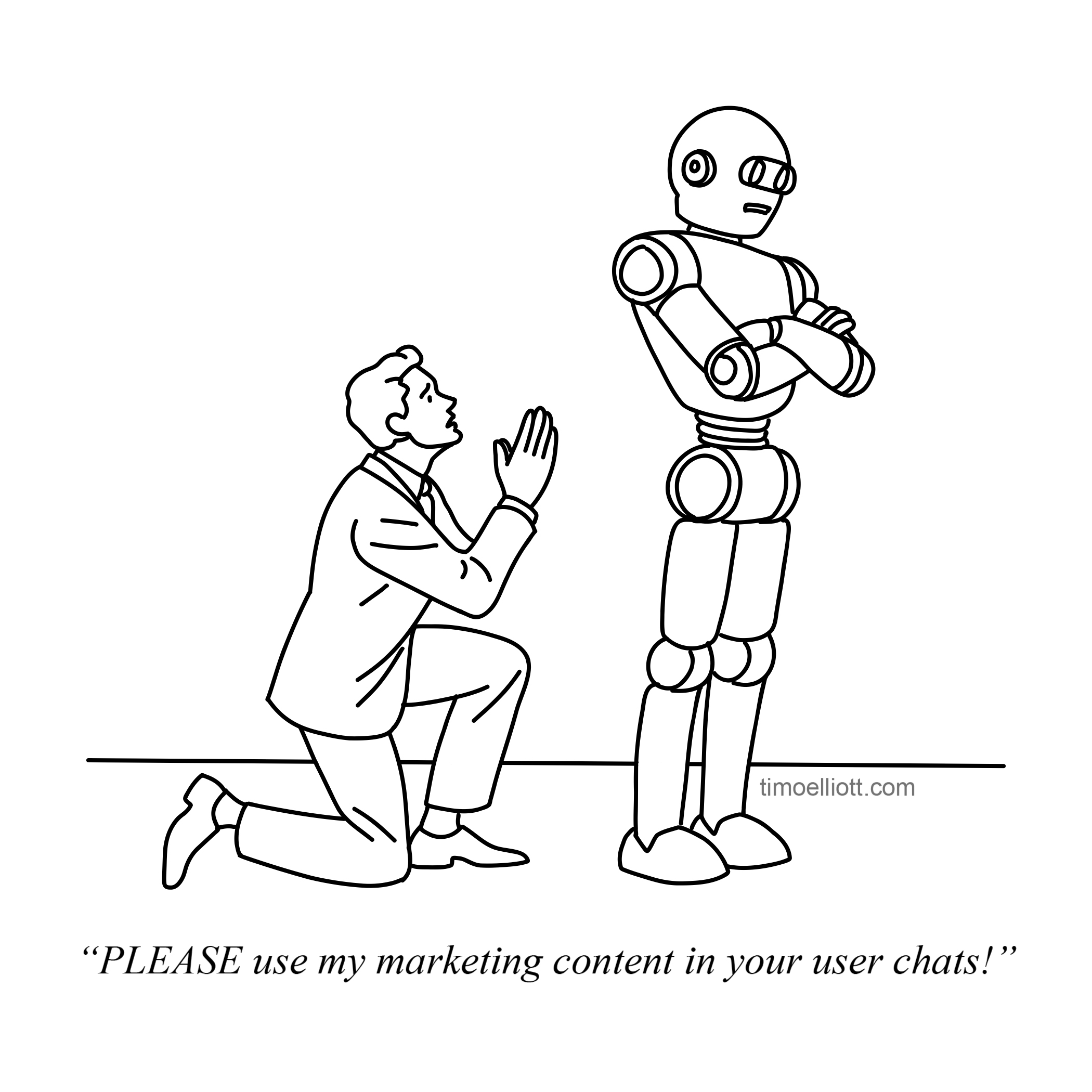
This has been on my mind recently. Marketers are being tempted to use the latest generative AI tools to create a tsunami of spam content—flooding the zone with automated social and blog posts.
But the right answer is to take a step back and remember what marketing is for: to help buyers buy. Organizations have an opportunity to use the power of AI to rethink the entire customer journey, making sure they optimize every touchpoint from the point of view of the customer. And to do that, you need to be able to get a view of their activities across every aspect of your interactions: not just they purchasing experience, but also billing and logistics and support and product design.
Research has shown, especially in the B2B space, that most purchasers have already done their research before they contact your organization. That already means that you’re at the mercy of the search algorithms that decide or not to show your content to prospects.

But it’s about to get worse: in a world where an impenetrable, black-box intelligent chatbot can answer any question, why would anybody turn to your website for information? And the “prospect” may not even be a person: it could be an AI agent or algorithm that has been delegated the task of finding the best product for the need.
So in the future, instead of marketing to people, will we need to market to algorithms, hoping to get “our” information into their dialog? How will that be possible?
According to my former colleague, Marek Kowalkiewicz, Professor and Chair in Digital Economy at Queensland University of Technology, you’ll turn to Algorithm Whisperers.
In his highly-recommended and just released book The Economy of Algorithms, AI and the Rise of the Digital Minions, he explains:
“Let’s imagine a world – it’s just around the corner – in which our fridges self-replenish, as some of our printers already do.
On the one hand, it would be important for fridge owners to become power users to ensure the fridge’s algorithm was aligned – that is, doing exactly what it was expected to do, such as consistently finding the best prices for the products it orders.
On the other hand, comprehending the algorithm’s decision-making process would be just as important for retailers. Why?
Because then retailers might be able to find a way to influence the algorithm’s decisions, or they might realise they need to modify their offerings so that the algorithm will purchase from them.
Advertisements and product designs that target human consumers use a similar strategy – the only difference in this scenario is that an algorithm is the target audience.
Advertising to a fridge – sounds weird, right? Yet in a world where bots are entrusted with buying and investing, there are numerous businesses that may wonder how to influence the decision-making of digital minions. If it’s possible, how will they go about it?”
You can follow Marek on his Substack Blog: The Economy of Algorithms
